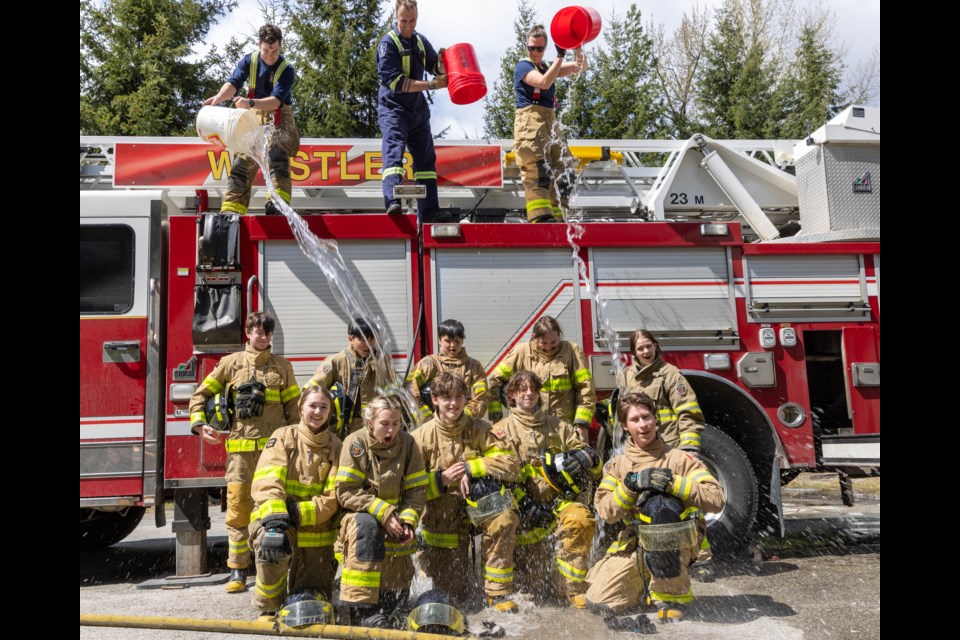In the last few weeks, early spring wildfires have swept across large swaths of Alberta and smaller portions of the Squamish-Lillooet Regional District (SLRD). As fire seasons grow in severity and length, the men and women fighting these blazes, within municipal limits and across the country, are more critical than ever.
Between May 5 and 7, a new generation of Whistlerites got to try on the equipment and experience first-hand what it is like to be a part of the Whistler Fire Rescue Service (WFRS) in the second year of the Junior Firefighter Training Program (JFTP).
According to WFRS captain Chris Heppell, throughout the weekend, about a dozen students from Grades 11 and 12 learned what it was like to be part of the force, gaining knowledge of the equipment, safety practices, and the teamwork required to be a firefighter.
“It went very well. It was very successful,” Heppell said. “I would say equal to last year, but probably even better just because it's our second year, and we've gotten the program really polished in terms of its content.”
The weekend program officially launched in Whistler last year, offering students a chance to see first-hand what it takes to be a firefighter.
The program's popularity has grown within the last year, having nearly doubled in size to 11 students, up from seven who partook in the first year, with the number of applications tripling to 20.
“We even had people inquiring randomly through email and whatnot to see if any spots are available. So the word is getting out that this program exists, and it's also developing some interest, which is really exciting,” Heppell said.
A significant amount of knowledge is passed on to the students over the weekend, with the youth learning to use everything from ground ladders and fire hydrants to the Jaws of Life. The program culminates in two live scenarios where students must put out a structure fire and use the Jaws on an automobile as a team.
“At the end of the two and a half days, when you watch these two scenarios that we have them participate in, you wouldn't know they've only been doing it for two and a half days,” Heppell said. "They look like they've been doing this for a long time. They look almost professional. It's pretty impressive."
While the experience is fulfilling for the students, and they come out with a shared sense of camaraderie and friendship, the WFRS doesn’t sugarcoat the challenges of the job, and aims to give the complete picture of what being a firefighter is really like in an urban environment.
“One of the reasons why we do this is to introduce them to the profession or even to be a volunteer firefighter. So we teach them all the fun, cool, flashy things, but we also talk about the real boots-on-the-ground stuff, the stuff that isn't the glory, so when they leave the program, they don't have this misconception that everything is all wonderful and it's glorious all the time,” Heppell said.
“We also teach them that there are some things with the job that you have to be ready to learn; you have to mentally be prepared for it and manage those as well. So we're not trying to misguide or make them believe one thing. We want them to fully understand that there are many components to this, but for the physical part of the program, that's really nice to get them in, hands-on and learn some of these skills and get a feel for it.”
To learn more about the service, check out whistler.ca/fire.






